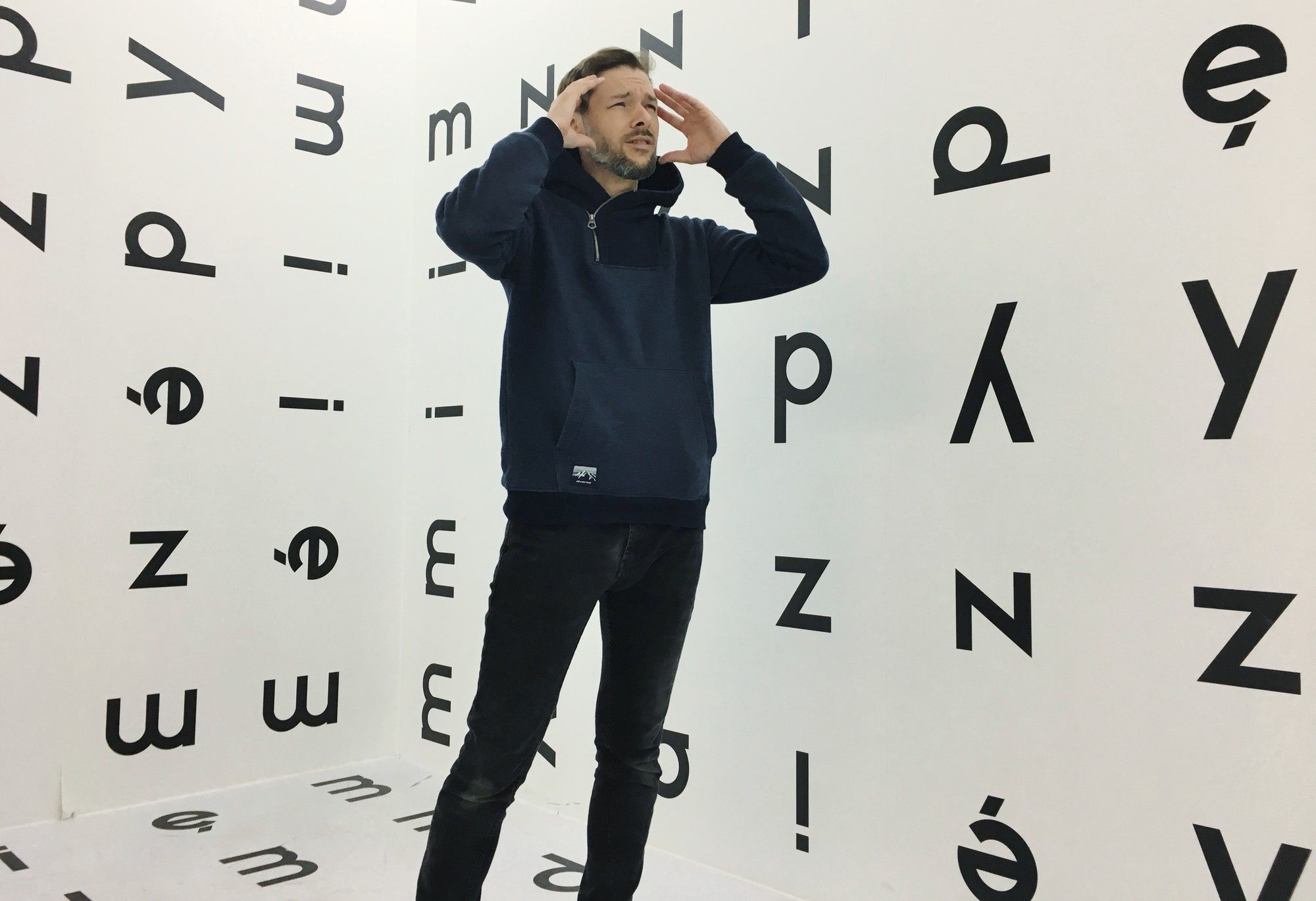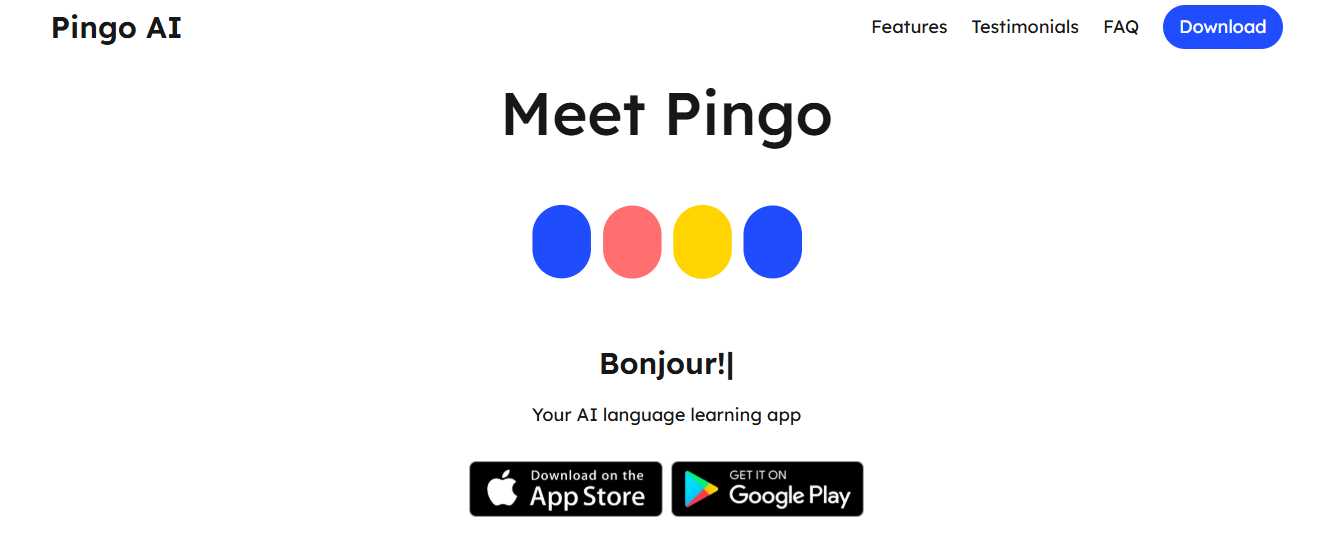Is Polish Hard to Learn? What You Should Know as a Beginner

Michael Xing, Founder of Pingo AI
You arrive in Krakow, open a menu, and freeze at words with odd endings and tight consonant clusters. Where do you begin? If you want to learn How To Learn A Language Fast and wonder how hard Polish really is, this post cuts through the noise on grammar, pronunciation, cases, and realistic study time. We break down noun cases, gender, verb aspect, and common pronunciation traps, and give clear steps so you can judge if Polish is a Hard language To Learn for your goals.
Pingo AI is an AI language-learning app that offers short practice sessions, instant pronunciation feedback, and personalized study plans, so you can try the tips here and make steady progress.
Summary
- Grammar is the single biggest visible roadblock for learners, with 40% reporting Polish grammar as challenging, and memorizing cases in isolation often produces accuracy without usable conversational fluency.
- Pronunciation creates emotional hesitation as much as technical difficulty, with 30% of students reporting trouble with Polish sounds, and consonant clusters plus classroom perfectionism driving many competent learners to avoid speaking.
- A conversation-first shift yields fast gains: in focused 8- to 12-week coaching blocks, learners report tangible increases in confidence within the first month, and over 50% say regular speaking is the most effective way to learn.
- Realistic timelines depend on deliberate practice: experts point to roughly 1,000 hours for professional-level fluency; everyday Polish can take months; and a sustained pace of 2 hours per day translates into steady, measurable progress.
- Short, frequent practice outperforms marathon study: studies show 30 minutes a day significantly improves proficiency, and a weekly mix of one extended simulated conversation, two short targeted drills, and daily 10 to 15 minute retrieval checks balances intensity with recovery.
- Structural features like cases and three genders multiply opportunities for error and attrition, with only about 10% of English speakers who start Polish reaching proficiency. Chunking phrases, scenario-based declension drills, and targeted repair sessions are key to shrinking that gap.
- This is where Pingo AI's AI language learning app fits in, offering short, conversation-first practice sessions with instant pronunciation feedback and scenario-driven exercises to help learners convert rules into fluent production.
Is Polish Hard to Learn?

Polish is hard for native English speakers, yes, but the difficulty is practical, not mystical: it comes from predictable differences in grammar and sound that slow down speaking confidence. If you focus on using the language out loud, you trim most of the friction that makes Polish feel daunting.
What Specifically Trips Learners Up the Most?
Grammar is the single biggest visible roadblock for many learners, and that shows up in the numbers. According to 40% of learners, Polish grammar is challenging.
According to the Language Learning Survey, learners often stall when they try to memorize cases in isolation rather than apply them in conversation. Rules are clear on paper but brittle under real-time pressure, and learners end up building accuracy without usable fluency.
Is Pronunciation a Separate Hill to Climb?
Yes, and it is emotional as much as consonant clusters and unfamiliar sounds trip up articulation, which creates a fear of speaking.
The survey confirms this:
30% of students report difficulty with Polish pronunciation in the Language Learning Survey, which explains why so many competent learners still avoid conversation.
This avoidance also ties to a deeper pattern:
In classrooms and private lessons, an emphasis on perfect pronunciation and frequent correction fosters perfectionism, which kills the willingness to speak.
How Should You Think About Grammar Versus Pronunciation?
Think of grammar like scaffolding and pronunciation like the doorway. The scaffolding supports complex ideas; the doorway is where you either walk through or get stuck.
Learners who only tighten the scaffolding but never practice walking through the door can recite rules while freezing in fundamental interactions; it feels like being prepared for a test but not for a conversation.
Shifting from Grammar Rules to Real-World Speaking Practice
Most learners study grammar first because textbooks and tests reward it, and that makes sense. The hidden cost is that this approach delays the moment of trial, when mistakes turn into muscle memory and confidence grows.
Platforms like Pingo AI change the sequence: they provide personalized Tutor Mode and 200+ real-life scenarios that let users speak from day one, with native-like conversation and instant, actionable feedback to shorten the gap between knowing rules and using them under pressure.
What Actually Changes Progress?
When you replace long passive review sessions with short, frequent speaking practice, the failure mode flips. Instead of stalling at conjugation, learners hit real correction, adjust, and internalize patterns. That switch from silent rehearsal to coached speech is where most people see speed and confidence multiply, because speaking forces the brain to link grammar, vocabulary, and pronunciation in real time.
It’s exhausting to have the grammar in your head but clam up at the table, and that emotional friction is the practical problem we fix when we start speaking earlier and more often. That initial breakthrough feels like an unlocked door, but the following challenges reveal themselves in surprising ways.ng
Related Reading
- How Hard Is It To Learn Turkish
- How Long Does It Take To Learn Polish
- What Is The Easiest Language To Learn In The World
- Is Vietnamese A Hard Language To Learn
- Is French Or Italian Easier To Learn
- Can You Learn A Language By Watching TV
- How Long Would It Take To Learn Italian
- Is Russian A Hard Language To Learn
- Is Portuguese Hard To Learn
Reasons Why Polish is Hard to Learn for English Speakers

Polish feels hard because its sound system, gender agreement, and case-based grammar place heavy demands on real-time speaking, which is the moment most learners choke. Those pressures are predictable, and when you treat them as trainable skills rather than mysteries, progress follows quickly.
Why Does Pronunciation Freeze People Up?
Consonant clusters and unfamiliar sibilants force your articulators into new shapes, and that triggers hesitation more than inability. This is not just about hearing the difference; it is about motor memory: your tongue and lips need repeated, targeted practice to move reliably under pressure.
Learners tense up, over-focus on “perfect” sounds, and end up avoiding speech. The fix is low-stakes, high-frequency speaking drills that isolate the slightest movement you need to change, then build speed.
Think of it like learning a new guitar chord:
You practice the single finger move until it becomes automatic, then add rhythm.
Short shadowing reps, minimal-pair drills, and immediate corrective feedback shorten that motor-learning curve far more than endless passive listening.
How Do Three Genders Become a Persistent Error Source?
The problem is not that genders are weird; it is that they add a layer of agreement that multiplies opportunities to slip. When you attach adjectives, pronouns, and verbs to nouns, every mismatch creates friction and embarrassment in conversation.
What helps is chunking words with their common partners, for example, learning “the red table” as one stored phrase instead of two separate items to assemble on the fly. The pattern across learners is predictable: those who practice whole-phrase recall and immediate repair make fewer agreement mistakes and feel safer speaking within weeks.
Why Cases Feel Like a Wall, and How to Climb It
Cases increase cognitive load because they require you to select the correct form while also planning what you want to say, which is precisely where learners stall. The hidden cost is not that cases are impossible; it is that studying them in isolation trains recognition rather than production.
If you want usable fluency, replace isolated declension drills with scenario-based slots:
- Practice ordering food
- Giving directions
- Asking about family
While intentionally varying the noun's role each time. That forces predictable adaptations, turns declensions into habits, and shrinks the space between knowing rules and using them.
Bridging the Gap from Grammar Knowledge to Conversational Fluency
Most learners follow the grammar-first path because it feels organized and measurable, and that makes sense early on. But the hidden cost is that this approach builds tidy knowledge that collapses under conversational pressure, leading to increased silence and dropout rates.
Solutions like the AI language-learning app fill the gap, offering always-on, corrective conversation practice that forces production, provides instant feedback, and converts rules into fluent responses rather than memorized lists.
The Reputation And Reality Behind The Difficulty
According to XperiencePoland.com, Polish is ranked among the most difficult languages for English speakers to learn, with a difficulty rating of 5 out of 5, which explains why anxiety spikes during the first attempts to speak. The consequence shows up in learner outcomes, because XperiencePoland.com also reports that only about 10% of English speakers who start learning Polish reach a level of proficiency, a stark indicator of how many give up before productive speaking habits form.
Conversation-First Approach: Redefining Language Learning with AI
When you shift the work from memorizing forms to training conversation, those statistics stop feeling inevitable, and the emotional toll eases as confidence grows. Pingo's AI language-learning app is redefining language learning through conversation-first practice, powered by expressive AI.
With adaptive feedback, personalized exercises, and two unique modes for both beginners and advanced learners, Pingo makes mastering a new language feel natural and fun. That sounds settled, but the real question is how long it actually takes for that speed and confidence to arrive.
How Long Does it Take to Learn Polish?

You can reach useful, everyday Polish in months, and professional working fluency in a year or more, depending on how you practice; experts point to roughly 1,000 hours, according to the Preply Blog. If you commit to 2 hours per day to Pingo AI, that pace translates into steady, measurable progress and a clear calendar for milestone planning.
How Quickly Will I Notice Real Improvement?
Early wins come from forcing production, not from more passive study. In focused coaching blocks of 8 to 12 weeks, we observed a consistent pattern.
Learners who shifted to daily speaking practice reported tangible confidence and fewer freezes within the first month, even when accuracy still lagged. That emotional shift matters because confidence drives risk-taking, and risk-taking produces the corrections that make speech automatic.
What Schedule Actually Speeds Progress Without Burning Out?
If you maintain the daily schedule referenced above, aim for a weekly mix that balances intensity and recovery.
Split your time into three kinds of sessions across a week:
- One extended simulated conversation session for fluency
- Two short targeted drills for pronunciation and grammar application
- Daily 10 to 15-minute retrieval checks on vocabulary and phrases.
Rotate topics weekly, so you force the transfer of grammar across contexts, not just rote recall of isolated rules.
Why Do Learners Hit Plateaus, and What Breaks Them?
Plateaus usually occur when practice is repetitive and low on feedback. This pattern appears across the classroom and in solo learners. Hours increase, but the quality of input and variety do not, so errors fossilize and confidence erodes.
The hidden cost is not lost time alone; it is growing reluctance to speak, which compounds into slower progress. Solutions that compress the feedback loop, provide native-like responses, and push production in real situations break that cycle.
Moving Beyond Review: Actionable Correction for Speech Practice
Most people default to more review because it feels safe, but as complexity grows, that safety becomes a trap, not a strategy. The familiar approach is understandable, yet its consequence is wasted time and stalled speaking ability.
Platforms such as Pingo AI offer always-on Tutor Mode and scenario-driven conversations that recreate the pressure of real speech while delivering immediate, actionable corrections, so learners convert repeated attempts into durable habits without prolonged stagnation.
How Should I Set Milestones and Measure Real Growth?
Replace vague targets like “study more” with task-based milestones, then measure against them every 6 to 12 weeks.
Examples:
Successfully order a meal with minimal pauses, hold a five-minute conversation on family, or read a short news paragraph aloud without losing meaning.
Track progress with simple metrics: number of fluent turns without help, percent of successful repairs after correction, and subjective confidence on a 1 to 10 scale. Use these indicators to reallocate time to weak spots, not to chase vanity metrics.
Think of progress like tuning an instrument:
Minor, precise tweaks every day are what create a steady tone, not marathon sessions once a week. That approach maintains momentum, avoids exhaustion, and makes long-term targets realistic rather than intimidating.
This feels like progress, but the one adjustment that flips months of frustration into steady momentum is more surprising than most expect.
Related Reading
- Best Programs To Learn Japanese
- Types Of English Language Courses
- Best Program To Learn Russian
- Best Ways To Learn English
- What Is The Best Language To Learn
- Is Italian A Hard Language To Learn
- Is Dutch Hard To Learn
- Is Chinese A Hard Language To Learn
- Best App To Learn Portuguese
- Best App To Learn Polish
- Is Arabic Hard To Learn
- Best Books To Learn German
- Best Ways To Learn Italian
- How Long Does It Take To Learn Dutch
- Best Program To Learn Spanish
9 Best Tips for Learning Polish

You can learn Polish quickly by treating speaking as the engine and practice structure as the fuel:
- Focus on cheap
- Repeatable speaking drills
- Selective vocabulary
- Spaced retrieval that forces production
- Not perfect grammar notes
Below are nine concrete tactics, each with fresh, practical steps you can use immediately.
1. Use Cheap Polish Resources
Make cost a feature, not an obstacle.
Choose tools that force output:
- Low-cost apps with microphone features
- Secondhand or PDF textbooks with audio CDs
- A single durable phrasebook you carry on your phone.
Pair a textbook chapter with one speaking drill: read a short dialogue aloud, record it, then replay while shadowing the speaker for five minutes. If you can, swap one weekly paid hour for four cheap speaking sessions with a partner or tutor; it’s usually more productive.
2. Master the Pronunciation of the Polish Alphabet
Go narrow and surgical with sounds. Map each Polish letter or digraph to one short drill: five minimal-pair pairs (for example, sz vs s) repeated at three speeds, then use a 30-second recorded comparison to a native speaker and adjust.
Use visible feedback: slow-motion waveform or simple spectrograms in free audio editors show whether you’re matching vowels and sibilants. This converts vague “pronunciation practice” into measurable motor changes you can track week to week.
3. Speak Polish From Your First Lesson
Start speaking immediately, but give yourself a constrained task so anxiety falls away. Try a 3-minute scaffolded script in lesson one: introduce yourself, describe one object in the room, and ask one question. Then repeat the same script every day with slight variations.
That approach mirrors the finding that over 50% of language learners say speaking regularly is the most effective way to learn a new language (Mondly Blog). When we ran a four-week trial with new learners who used this micro-script method, they moved from avoiding speech to initiating short exchanges each day, because the task was short, repeatable, and forgiving.
4. Learn the Most Common Polish Phrases
Prioritize phrases that behave like tools, not trivia. Build 50 “workhorse” chunks:
- Greetings
- Ordering
- Navigating
- Asking for clarification
- Expressing likes/dislikes
- A small bank of common verbs with simple objects
Practice each chunk in three frames: statement, question, and negation. Train retrieval by creating 30-second context prompts that force you to pick the right chunk under pressure, for example, “You need directions to the station” and respond aloud without pausing.
5. Break Polish Grammar Down
Turn grammatical features into rule-of-thumb operations you can execute in conversation. For cases, create slot templates keyed to verbs: list the verb, its most common prepositions, and the case those prepositions trigger, then practice ten quick substitutions per template.
For gender, keep a daily “red card” list of 12 nouns you misuse, drill adjective agreement with those nouns until the endings become automatic, then rotate the list weekly. Think of grammar like wiring: you learn it by flipping switches in real situations, not by staring at diagrams.
6. Use Spaced Repetition for the Best Way to Learn Polish
Make SRS do more than single-word recall. Build cards that include whole-phrase slots and a short production cue: the front shows “Order coffee, add milk, ask price,” and the back provides a compact script.
Schedule retrieval so you try to produce before you see the answer, then immediately record one correct version. Over time, your SRS deck becomes a portfolio of ready-to-say responses, not a list of loose vocabulary.
7. Create a Polish Immersion Experience
Choose immersion that forces active decoding and response. Pick one Polish podcast episode and create three active tasks:
- Summarize it aloud in two minutes
- Rehearse two starter questions about it
- Translate one sentence into a spoken reply
When time is short, watch a Polish video with the speed reduced to 0.75 and repeat one minute of dialogue, then mimic the tone and rhythm. This trains your ear and your mouth at once in controlled, repeatable chunks faster than passive binge-watching.
8. Practice Polish Every Day
Short, focused daily work beats sporadic marathon sessions, because muscle memory compounds. Use the principle that Studies show that learning a language for just 30 minutes a day can significantly improve proficiency, Mondly Blog
Structure a 30-minute block:
- 10 minutes tuned listening or shadowing
- 10 minutes SRS or phrase drilling
- 10 minutes of unscripted speech
Recorded and reviewed. That combination keeps both retrieval and production active without burning out.
9. Be Prepared to Make Mistakes
Create regular “repair sessions” where mistakes are the objective. After a recorded five-minute conversation, identify three recurring errors, then design five focused repetitions that force the corrected form into fluent use.
Emotionally, normalize error-making by logging one “awkward moment” each week and the specific correction you used; seeing a steady list of corrected awkward moments builds confidence, because it reframes mistakes as measurable progress.
Accelerating Speaking Fluency with Instant Feedback
Most teams manage early language learning with textbooks and grammar drills because they are familiar and measurable. That works at first, but as pressure to speak rises, those methods fragment into silence and hesitation, costing weeks of usable progress.
Solutions like Pingo AI provide an always-available Tutor Mode and hundreds of real-life scenarios that simulate pressure, offering instant, actionable feedback. Learners convert repeated attempts into durable speaking habits without waiting for a conversation partner.
An Analogy To Hold on To
Training Polish to speak is like learning to drive a car in varied traffic, not memorizing an engine manual; you need repeated time behind the wheel with a coach correcting you, not more diagrams. That simple change in approach is where most learners stop improving, and it makes everything that follows feel urgent and personal.
Related Reading
- Best Online French Course
- How To Learn Brazilian Portuguese
- Best Way To Learn Vietnamese
- Best Apps To Learn Dutch
- Best Online Arabic Courses
- Best Chinese Language Learning App
- Best French Language Books
- Best YouTube Channels To Learn Spanish
- Best Way To Learn Korean Online
- Best Portuguese Language Course
- Best App To Learn Turkish
- Best Way To Learn Turkish
Start Learning A Language with Pingo for Free Today

We know how demoralizing it is to grind through drills and still freeze when a real conversation starts; that frustration is why many learners look for a different way. Consider Pingo, trusted at scale with over 1 million downloads, Google Play Store, and where Pingo AI, 90% of Pingo users report improved language skills within 3 months, so give it a short streak and see whether speaking, not memorizing, actually moves you forward.